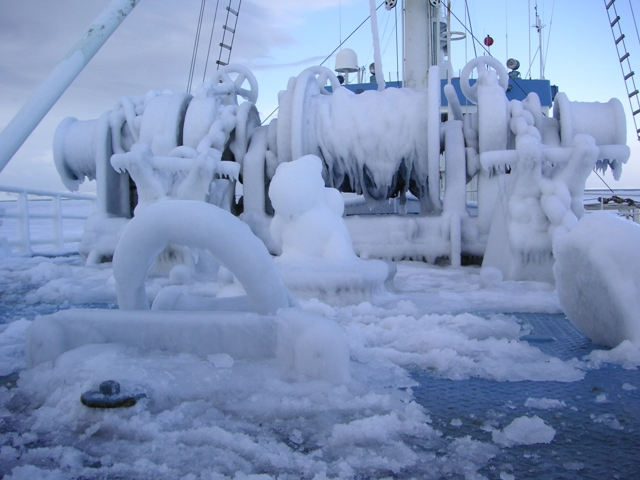Jan 8 2015
 In the Arctic, steel constructions must be able to withstand temperatures as low as minus 60 degrees. Photo: Ragnhild Lundmark Daae, NTNU
In the Arctic, steel constructions must be able to withstand temperatures as low as minus 60 degrees. Photo: Ragnhild Lundmark Daae, NTNU
Studies reveal that 13% of remaining oil and 30% of remaining gas reserves are located around the Arctic regions, causing the oil industry to move north to lay claims on it.
One of the current key requirements is the development of materials that can resist the extreme climates situated in the Arctic circle.
Oil and gas projects, such as the Snøhvit and Goliat, are preparing for operation in conditions of -20°C. Further north, temperatures can drop as low as -40-60°C. Currently, steel materials are likely to become brittle and fracture at these temperatures.
A research team at SINTEF Materials and Chemistry led by senior researcher Odd Magne Akselsen is focused on improving fracture resistance of construction materials. The researchers aim to create accurate mathematical models, predict the properties of materials and perform essential modifications. However, to accomplish this aim, they require plenty of data at both micro- and nano-scales.
"There are two factors. The ductility (fracture resistance) of a material is dramatically reduced when temperatures fall below zero", Akselsen said. "Moreover, steel plates used in platform construction have to be welded together. After welding, involving high rates of heating and cooling, it becomes easier for cracks to develop"
"A single crack can result in brittle fracture by which the material breaks in two in just a couple of seconds", said Akselsen. "Such fractures are unstable, impossible to predict and very dangerous – potentially resulting in catastrophic accidents.”
Therefore, to prevent such hazards, the researchers are conducting several tests relating to the flexing and stretching of cracks introduced into welds and assessing small samples with the aid of an electron microscope. A new technology is also being tested by carrying out measurements using acoustic signals. The researchers fit sound heads and a sensor to the samples while deforming and stretching them.
"We record a small signal when the crack begins to develop. It's like the sound of breaking glass. We stop the test at the first indication of a sound, and put the sample under the microscope to find out where the signal has come from. Even though this may occur in a small grain just a few micrometres across, we enlarge everything to let us see where the microfracture was initiated. Yes, then we can find out why it happened, and then look into how we can make modifications to prevent it." Akselsen said.
Akselsen, with years of experience in materials science, is currently focusing on “ductility" or "transition" curve, which helps finding the temperatures at which a material will transform from being ductile to brittle.
Somehow we have to find a way to shift this curve towards a lower temperature range. This is incredibly complex work, but we believe we're on the right track.
Odd Magne Akselsen - Senior Researcher
Several Ph.D. and Master's students from the Norwegian University of Science and Technology (NTNU) assisted on the project. One of them was successful in inserting a crack in the sample, precisely in the area marked out by the researchers.
"This is incredibly valuable work. So now we know how the brittle phase will behave under deformation", Akselsen said. "Studying local strength and ductility properties at this level allows us to develop more accurate models which can be used to predict unwanted incidents", he explains.
Another material tested by the research team to handle Arctic conditions is aluminum. This material can be employed for building accommodation modules, staircases, and gangways fixed on platforms. An advantage of aluminum is that it weighs less than steel, and therefore can be easier to transport from mainland to Arctic regions.
However, more issues need to be solved. The researchers have to work on improving quality of these materials when oil companies begin operations north of the Goliat field.
"The lower temperatures mean that there is a risk that only 80 percent of the strength of current steel products can be utilised. If we are to succeed in shifting the ductility curve down to 50 degrees below zero, basic materials must be modified to provide an adequate ductility margin", Akselsen said. "Our task today is to consolidate our know-how and testing methods, and accumulate test results. This will be a valuable foundation which the oil and gas industry can use as a guide".